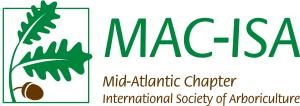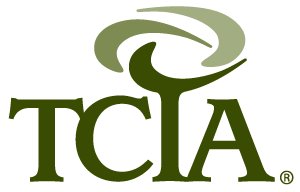Understanding plant health is essential to preserving the value, beauty, and safety of your landscape. Whether you’re a homeowner in Howard County noticing yellowing leaves, or a commercial property manager in Montgomery County seeing tree dieback, knowing how to spot early warning signs can make all the difference. At Prestige Tree Experts, our certified arborists rely on both symptoms and signs to accurately diagnose plant problems and deliver environmentally responsible solutions.
What’s the Difference Between Symptoms and Signs?
- Symptoms are changes in a plant’s appearance or growth caused by a stress factor. Think yellowing leaves, wilting, or unusual deformities.
- Signs are the physical presence of a damaging agent—like fungal spores, insect larvae, or bacterial ooze—that confirms a specific cause.
Understanding both is key to accurate diagnosis and treatment.
Common Plant Symptoms and What They Mean
Here’s a breakdown of the most important symptoms you may observe in your trees and plants:
- Chlorosis: Yellowing of green tissue due to lack of chlorophyll. Causes include nutrient deficiencies, high soil pH, insect feeding, and pathogens .
- Wilting: Drooping leaves or stems due to drought, root rot, borers, or vascular disease.
- Dieback: Death of shoot tips progressing backward. Common with fungal cankers, root rots, or environmental stress .
- Necrosis: Tissue death, often appearing brown or black. Caused by numerous stressors.
- Leaf Spots: Localized damage from fungi, bacteria, insects, or viruses. Appear as circular lesions.
- Blight: Sudden and widespread tissue death. Often linked to fungal or bacterial infection.
- Deformities: Twisted or misshapen growth due to herbicides, viruses, or insect activity.
- Scorch: Browning from the edge of the leaf inward, caused by drought or vascular pathogens.
- Tatters: Shredding of young leaves, often on oaks, typically a result of environmental stress .
- Flagging: Isolated dead branches on otherwise healthy plants, often linked to borers or cankers.
- Mosaic or Mottle: Patchy color variation, often viral.
- Stunting: Underdevelopment of growth, linked to viruses or poor root health.
- Witches’ Broom: Dense clusters of shoots often caused by aphids, phytoplasmas, or fungi.
Signs of Pests, Pathogens, and Other Causes
Where symptoms tell the story, signs provide the evidence. Some of the most common include:
- Fungal Fruiting Bodies (Conks): Shelf-like growths on trunks or limbs indicating internal decay.
- Spores and Mycelium: Seen in powdery mildew or mold infections.
- Pustules: Blister-like structures that contain spores from rust or bacterial pathogens.
- Honeydew and Sooty Mold: Sticky excretions from sap-sucking insects like aphids that promote mold growth.
- Ooze: A sign of bacterial infection, such as fire blight.
- Hyphae or Sclerotia: Thread-like or hardened fungal structures in decayed tissue.
- Insect Activity: Webbing (from mites or caterpillars), larvae, boreholes, or molted skins.
Environmental and Mechanical Clues
Some plant problems stem from non-living (abiotic) factors:
- Cracking: Splitting bark from freeze-thaw cycles or physical injury.
- Girdling: Roots or objects cutting off vascular flow.
- Gummosis: Sap ooze, often on stone fruit trees, from stress or insect injury.
- Rolling or Curling Leaves: Often herbicide exposure or insect nesting.
- Defoliation: Leaf loss due to drought, pests, or disease.
Why Accurate Diagnosis Matters
A single symptom—like wilting—can be caused by multiple issues: drought, root rot, borers, or fungal cankers. Treating without knowing the cause risks wasting time and harming your landscape. That’s why Prestige Tree Experts emphasizes comprehensive plant evaluations, including:
- Root zone assessments using air spading
- Integrated Pest Management (IPM)
- Laboratory diagnostics, when needed
- Environmentally responsible chemical treatments, such as micro-injections or targeted sprays
Get Expert Help from Certified Arborists in Maryland
If you’ve spotted troubling symptoms or signs on your trees, don’t guess. Early detection and accurate diagnosis are crucial to protecting your landscape investment. At Prestige Tree Experts, we combine local expertise, advanced tools, and sustainable practices to restore plant health and ensure safety.
📍 Serving Howard, Montgomery, Anne Arundel, Prince George’s, and Baltimore Counties.
📞 Call 240.281.3334 or visit https://prestigetreeexperts.com for a free consultation.







